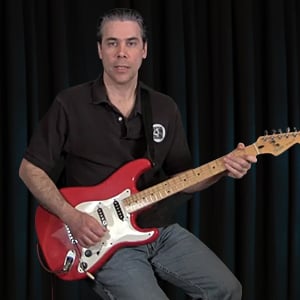Description
This tutorial explains the concept (theory) of barre chords and how to apply them (practice) to the guitar. We will start with the mechanics of how to "barre" and then learn how to use our barring index finger as a sort of "movable capo". Using this idea enables us to use the basic open chords of E major, E minor, A major and A minor to play any given major or minor chord chromatically in many different positions covering the fretboard.
Lesson Info

Instructor
Christopher Schlegel
- Styles:
- Any Style
- Difficulty:
-
- Files
- Videos / Score
- Published